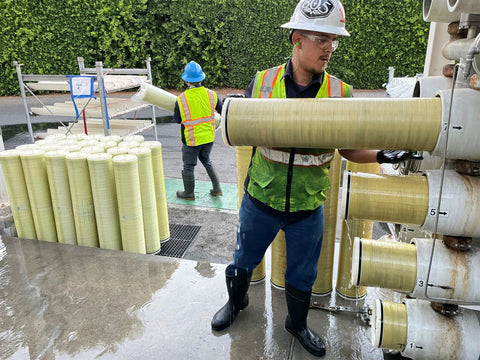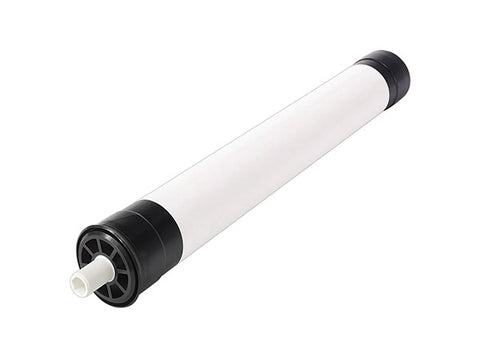
Membrane pores are microscopic structures on the surface of filter membranes that play a crucial role in the water filtration and purification process. These membranes are designed to block contaminants while allowing water molecules through their very small pores. The use of membrane pores in modern filtration systems has transformed the way we access cleaner and safer water for daily use.
These pore membranes are effective in capturing and removing various types of contaminants, including microorganisms, chemicals, and dissolved particles, ensuring that the water produced is not only clean but also meets stringent health standards. This technology also supports environmental sustainability by reducing the amount of waste generated during the filtration process, making it an environmentally friendly solution for current and future clean water needs.

How Do Membrane Pores Work?
The pores in filter membranes are extremely small, often measured in nanometers. This pore size allows the membrane to effectively separate unwanted particles or molecules from water. This process, known as micro filtration, ultrafiltration, or nanofiltration, depending on the size of the membrane pores, is key in producing water that is purer and free of contaminants such as bacteria, viruses, and sediment.
In addition, membrane pores also work on the principle of differential pressure, where pressure applied to one side of the membrane pushes water molecules through the pores while retaining solutes and other large particles. This technique not only increases filtration effectiveness but also efficiency in energy use and waste reduction, making it ideal for applications on both industrial and domestic scales.

Types of Membranes Based on Pore Size
In the world of water treatment, there are various types of membranes classified based on their pore size, each of which has a specific function in purifying and filtering water. Here is an explanation of these types of membranes:
-
Microfiltration Membrane: Having the largest pores among membrane types, it is commonly used to remove bacteria and other large particles from water. This technology is often found in applications that require initial purification from coarse contaminants.
-
Ultrafiltration membranes: Smaller pores than microfiltration, very effective in eliminating viruses and colloids from water. Ultrafiltration is a good choice for applications that require finer levels of filtration and is often used in combination with other filtration technologies for optimal results.
-
Nanofiltration Membranes and Reverse Osmosis: This is the most advanced technology with the smallest pores, capable of removing ions and small molecules from solution. Nanofiltration is effective for reducing turbidity, color, and some types of organic contaminants, while reverse osmosis can remove almost all dissolved contaminants, making it the best solution for applications that require very high water standards, such as in medical and pharmaceutical use.

Application of Pore Membrane in Water Treatment Industry
Membranes with micro to nano pores are essential in the water treatment industry. This technology is used across a wide range of scenarios, from drinking water filtration to wastewater treatment. With their ability to handle varying levels of contaminants, these membranes play a vital role in ensuring high water quality, which is highly required in various industrial processes and also for household consumption.
In addition, these membranes also play a role in the desalination process, turning seawater into fresh water that is fit for consumption. This process is particularly important in areas that experience freshwater shortages. Filter membranes also support water recycling processes, enabling the reuse of cleaned wastewater for various industrial purposes, thereby reducing the need for new water sources and minimizing environmental impact.

Membrane pores are a key component in water filtration technology that allows us to get cleaner and safer water. The development and maintenance of this membrane technology must continue to ensure access to quality water sources for the community. Watermart as a trusted distributor of water treatment equipment in Indonesia, understands the importance of innovation and availability of efficient membrane technology to meet the increasing needs of water filtration.
More than that, the use of these membranes also supports environmental sustainability, reduces energy consumption, and helps in water conservation efforts. Therefore, investment in membrane technology research and development not only meets the needs of now but also sets up a solid foundation for a sustainable future.

.png?width=50&height=50&name=Logo_Watermart_Perkasa-removebg-preview%20(1).png)


